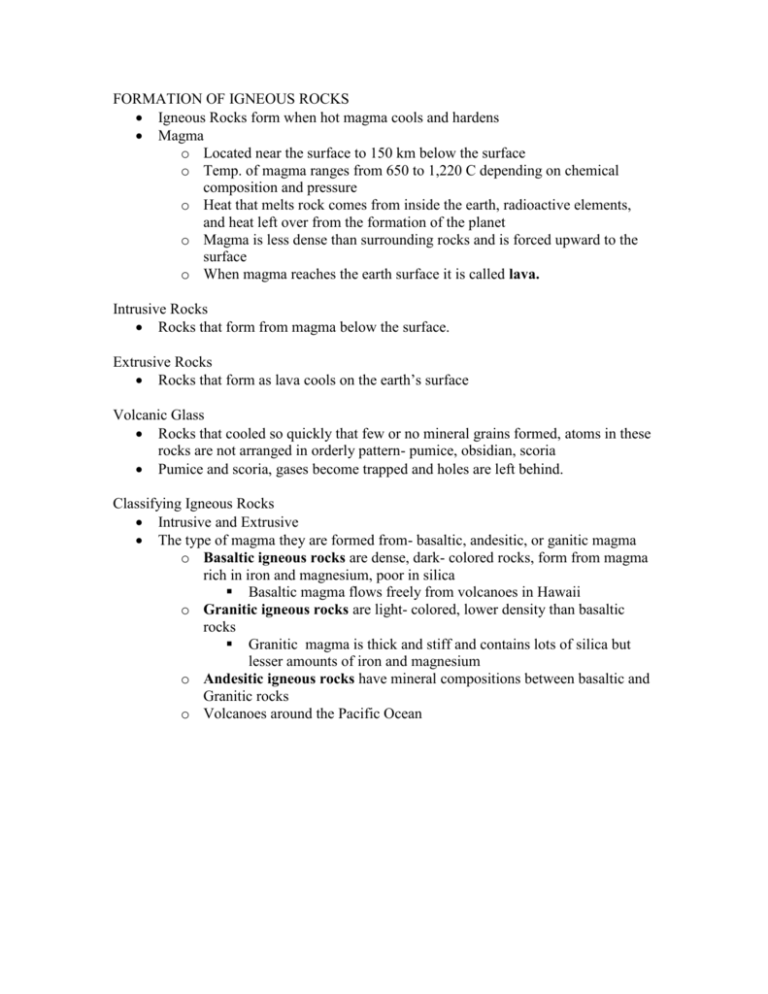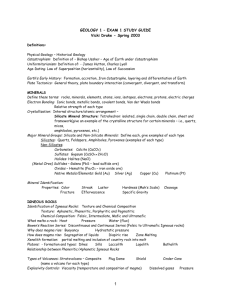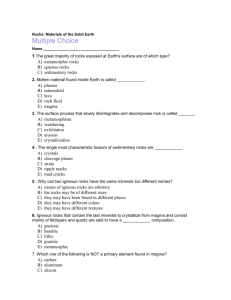FORMATION OF IGNEOUS ROCKS
advertisement

FORMATION OF IGNEOUS ROCKS Igneous Rocks form when hot magma cools and hardens Magma o Located near the surface to 150 km below the surface o Temp. of magma ranges from 650 to 1,220 C depending on chemical composition and pressure o Heat that melts rock comes from inside the earth, radioactive elements, and heat left over from the formation of the planet o Magma is less dense than surrounding rocks and is forced upward to the surface o When magma reaches the earth surface it is called lava. Intrusive Rocks Rocks that form from magma below the surface. Extrusive Rocks Rocks that form as lava cools on the earth’s surface Volcanic Glass Rocks that cooled so quickly that few or no mineral grains formed, atoms in these rocks are not arranged in orderly pattern- pumice, obsidian, scoria Pumice and scoria, gases become trapped and holes are left behind. Classifying Igneous Rocks Intrusive and Extrusive The type of magma they are formed from- basaltic, andesitic, or ganitic magma o Basaltic igneous rocks are dense, dark- colored rocks, form from magma rich in iron and magnesium, poor in silica Basaltic magma flows freely from volcanoes in Hawaii o Granitic igneous rocks are light- colored, lower density than basaltic rocks Granitic magma is thick and stiff and contains lots of silica but lesser amounts of iron and magnesium o Andesitic igneous rocks have mineral compositions between basaltic and Granitic rocks o Volcanoes around the Pacific Ocean








